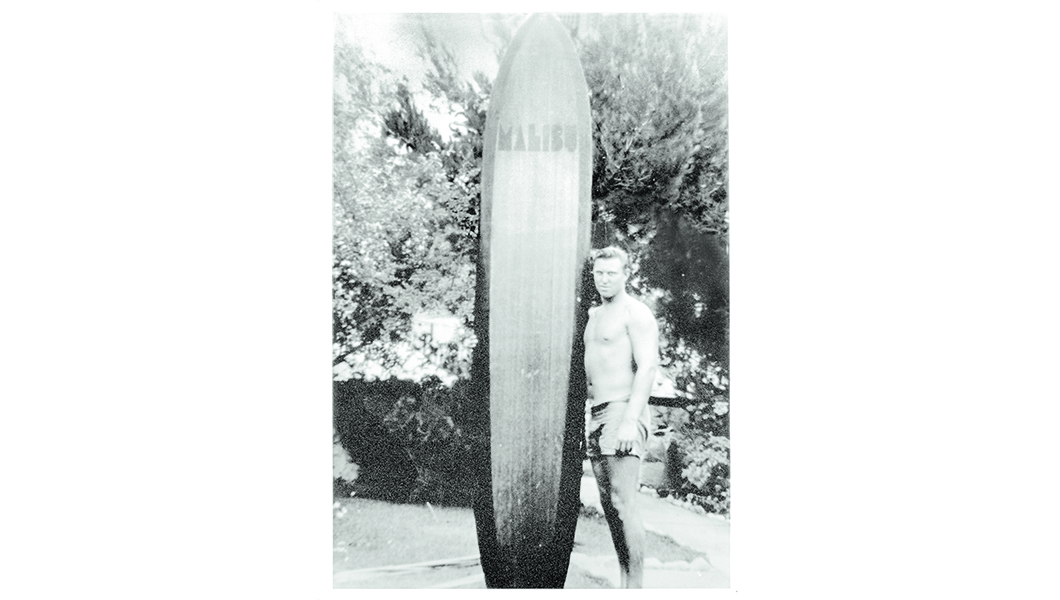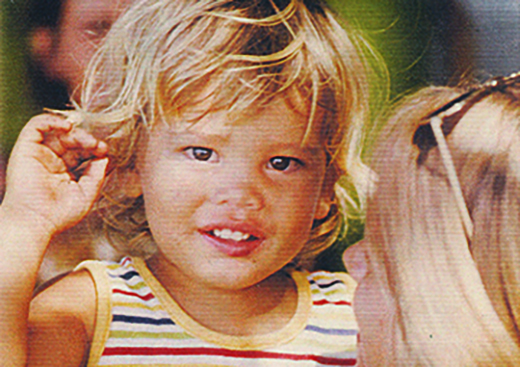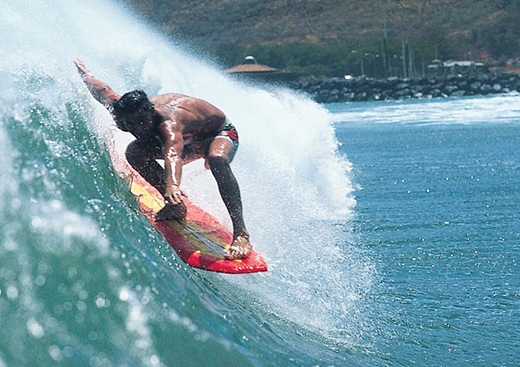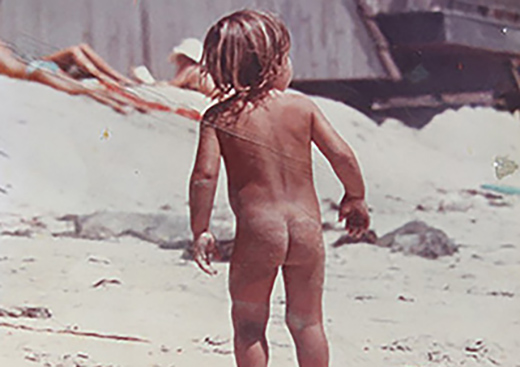I first met my father, Walter, when I was 4 years old. My mom, a divorcée with three kids, my older sister Joyce, younger brother Tony and myself had plans on renting out the room off the garage, kind of a standard practice on Balboa Island. I heard a knock on the front door, ran across the UPS-colored linoleum floor to swing open the door, and there stood a huge mountain of a guy in a sleeveless Makaha sweatshirt, M.Nii trunks, a ukulele under one massive arm and bare feet. I was a little peeling-nosed, sun- bleached beach kid, and I knew instantly this was a kindred spirit. Within a couple of years they were married and he adopted all of us. Quite the man.
Walter grew up in Hollywood and started surfing the California coast with his brother, Phillip “Flippy” Hoffman, in the early ’40s. Their father, Rube, was a textile converter, and after Walter’s stint in the Navy, being stationed in Hawaii, where he was able to perfect his big wave riding, he returned to join his father’s business. There he cultivated clients with the company’s fantastic prints inspired by his love of the ocean and the beach lifestyle. It was the early ’50s and California was growing at an unbelievable pace. With the nation finally at peace after WWII and the Korean Conflict, people had a feeling of prosperity and hope; art and design were able to flourish in this environment. The advanced technology developed in the aerospace industry made it possible for designers to push the boundaries of traditional craftsmanship, and this was particularly felt in surfboard building with the introduction of foam and fiberglass. With the boards going from a hundred pounds of solid wood to 40-plus pounds, surfing was now accessible to all, and Midcentury Modern outdoor casual living was the American Dream.
Prints were everywhere—wallpaper, upholstery, curtains, rugs and certainly clothing. With designers specifically going after the active-lifestyle enthusiast, right place right time, Hoffman Fabrics was there. From the swimwear designers of the early times to the young startups that were specifically targeting the surf enthusiast, my dad, with a large in-house art department, helped create the “surf look” with the prints they were creating. In the early ’60s we were spending every Christmas in Hawaii, so my dad and older sister, Joyce, who by this time was going after the women’s world surfing title, could surf in the perfect Hawaiian conditions. We would spend a few weeks there while my dad judged the Makaha contest, which he had won in the early ’50s and in which my sister now competed. Our family life revolved around the beach culture, and all my father’s friends, most since he was in his teens, were the first generation of surf enthusiasts who would go on to create the magazines, films, boards and clothing that would define the early surf lifestyle.
—





